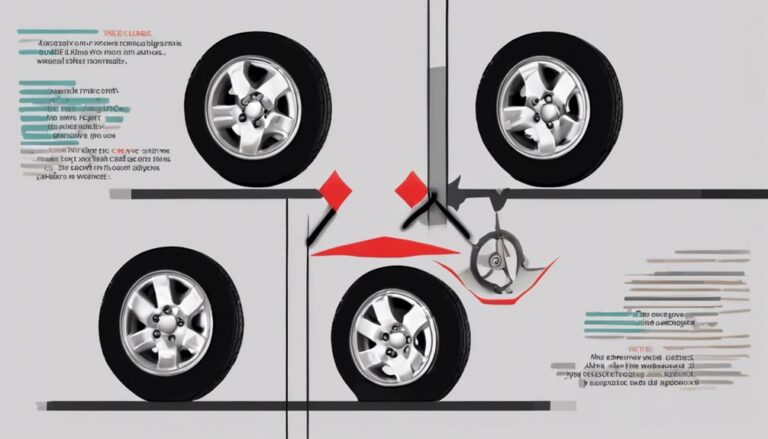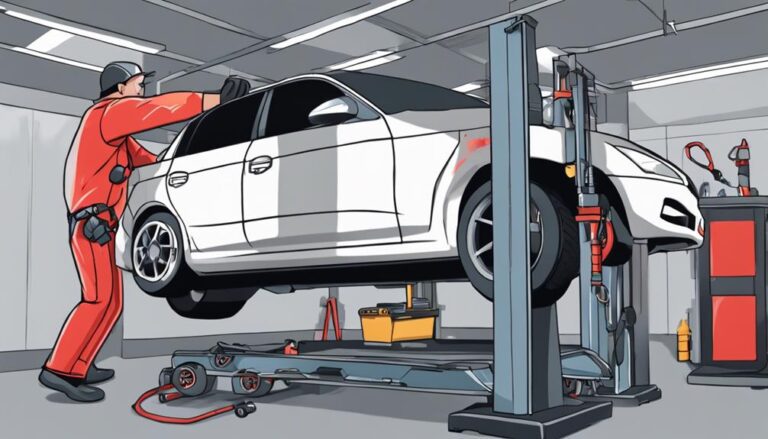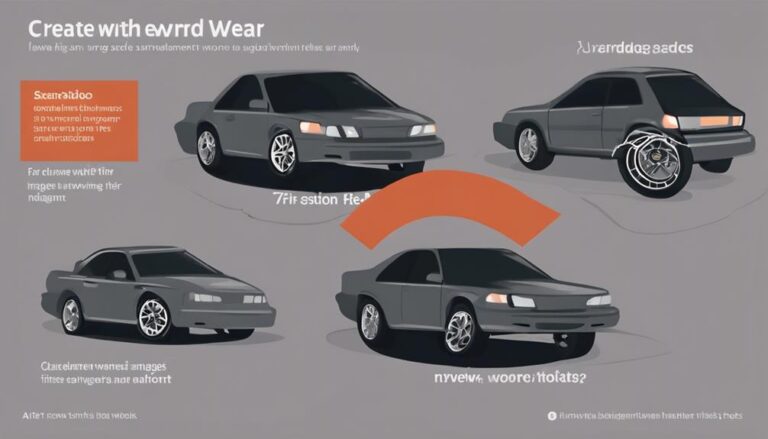Optimizing Tire Rotation and Alignment for Car Repair
When it comes to maintaining your vehicle's performance, ensuring proper tire rotation and alignment is akin to giving your car a tune-up it deserves.
But have you ever wondered if there's a way to maximize the benefits of these routine maintenance tasks?
By understanding the nuances of tire rotation patterns and the significance of precise wheel alignment, you can unlock the potential for a smoother ride and improved safety on the road.
So, how can you optimize these practices to get the most out of your car's performance?
Key Takeaways
- Regular alignment checks prevent uneven tire wear and maintenance costs.
- Proper tire rotation enhances longevity and vehicle performance.
- Correct alignment improves handling, stability, and driving safety.
- Timely balancing reduces safety risks, vibrations, and suspension strain.
Impact of Improper Tire Rotation
Improper tire rotation directly affects tire longevity and vehicle performance, necessitating regular maintenance to prevent detrimental effects.
Tire longevity is compromised when tires wear unevenly due to improper rotation. This uneven wear pattern not only accelerates the need for premature tire replacement but also impacts handling improvements.
When tires wear unevenly, it affects the balance and stability of your vehicle, leading to reduced traction and compromised braking performance. Proper tire rotation ensures that each tire wears evenly, optimizing handling improvements and ensuring consistent performance.
Neglecting this maintenance can result in decreased fuel efficiency as the tires struggle to grip the road surface uniformly. By adhering to regular tire rotation schedules, you not only extend the lifespan of your tires but also enhance your vehicle's handling capabilities, ultimately contributing to a safer and more efficient driving experience.
Effects of Misaligned Wheels
Misaligned wheels adversely impact tire wear, vehicle performance, and driving stability. When your wheels aren't properly aligned, it can lead to uneven tire wear, affecting the longevity of your tires. This uneven wear not only reduces tire lifespan but also hampers handling improvements and driving stability. Additionally, misalignment causes the vehicle to pull to one side, compromising safety and overall performance.
Moreover, misaligned wheels increase rolling resistance, decreasing fuel efficiency and potentially resulting in higher fuel costs. The added strain on tires from improper alignment can lead to premature replacements, adding to your maintenance expenses. By promptly addressing misaligned wheels, you can prevent further damage to suspension components and ensure optimal vehicle handling, thus enhancing both tire longevity and driving stability. Regular alignment checks are crucial for maintaining vehicle safety, performance, and efficiency.
Performance Issues From Poor Alignment
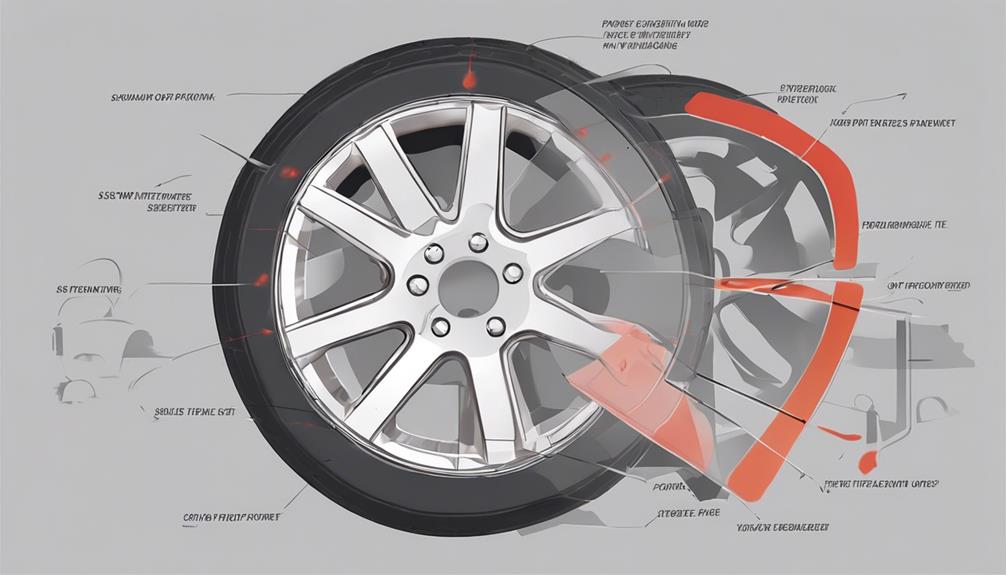
Regularly monitoring your vehicle's alignment is crucial to addressing potential performance issues resulting from poor alignment. When alignment is off, it can lead to various problems affecting both handling improvements and tire longevity.
Here are some key points to consider:
- Uneven Tire Wear Patterns: Poor alignment can cause tires to wear unevenly, leading to premature replacement and increased maintenance costs.
- Steering Control: Misalignment can cause your vehicle to pull to the right or left, affecting your ability to steer properly and compromising overall driving safety.
- Handling Issues: Off-center steering wheel alignment can result in discomfort while driving and potential safety risks due to handling problems.
- Weather Conditions: Improper alignment can exacerbate loss of control in poor weather conditions, compromising road grip and stability.
- Alignment Checks: Utilizing free alignment checks at Service Street Auto Repair can help promptly diagnose and address alignment issues, preventing further damage.
Safety Risks of Incorrect Tire Balancing
Monitoring tire balance is essential to avoid safety risks associated with uneven tire wear and compromised vehicle stability. Incorrect tire balancing can lead to various safety hazards, including decreased traction and handling due to uneven tire wear patterns.
Imbalanced tires can cause vibrations that not only affect the comfort of your drive but also impact the stability of your vehicle on the road. Moreover, over time, unbalanced tires can place additional strain on suspension components, potentially leading to damage and costly repairs.
The uneven tire wear resulting from improper balancing can also shorten the overall lifespan of your tires, necessitating premature replacements. By prioritizing regular tire balancing as part of your tire maintenance routine, you can ensure optimal performance, stability, and safety while driving.
Understanding and utilizing proper balancing techniques is crucial to mitigating these safety risks and maintaining your vehicle's overall health and longevity.
Long-Term Damage Caused by Misalignment
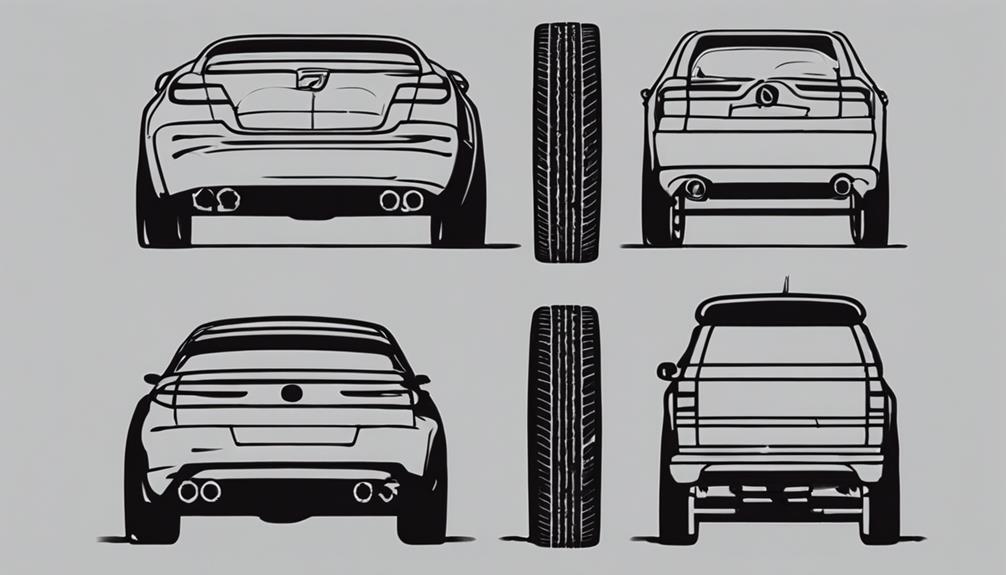
To prevent long-term damage and maintain optimal tire performance, regular alignment checks every 6,000 miles are crucial. Misalignment can have severe consequences on your vehicle, leading to various issues that can impact your safety and wallet.
Here are some key points to consider regarding alignment consequences and tire wear implications:
- Uneven Tire Wear: Misalignment causes tires to wear unevenly, resulting in premature replacement and increased maintenance costs.
- Suspension Strain: Improper alignment puts strain on suspension components like bushings and track rods, leading to accelerated wear and potential damage.
- Minor Misalignment Effects: Even slight misalignments, measured in tenths of degrees or hundredths of inches, can significantly affect tire wear and vehicle handling.
- Long-Term Impact: Over time, misalignment effects worsen, impacting safety, fuel efficiency, and overall driving comfort.
- Regular Checks: Regular alignment checks every 6,000 miles are essential to prevent long-term damage and ensure optimal tire performance and lifespan.
Frequently Asked Questions
Can Tire Rotation Fix Alignment Issues?
Tire rotation cannot fix alignment issues. It focuses on even wear distribution. For handling performance and tire wear, proper alignment is crucial. Regular rotation can prevent uneven wear. Remember, alignment ensures wheels are perpendicular to the ground, optimizing road contact.
Which Is More Important Tire Rotation or Alignment?
In maintaining your vehicle, tire rotation and alignment are both crucial for performance. While tire rotation extends lifespan, alignment ensures precise steering response. Follow your maintenance schedule to balance wear and enhance driving habits.
Can Bad Tires Mess up Alignment?
Yes, bad tires can mess up alignment. Uneven tire wear affects steering control and alignment accuracy. Addressing tire issues before alignment ensures precise adjustments for optimal performance. Replace worn-out tires for proper alignment.
Conclusion
In conclusion, optimizing tire rotation and alignment is essential for maintaining vehicle performance and safety. Neglecting proper maintenance can lead to issues akin to a ship navigating rough waters without a compass.
By following recommended rotation patterns and regularly checking alignment, you can steer clear of potential hazards and ensure a smoother ride for miles to come. Stay proactive in caring for your tires, and you'll reap the benefits of improved handling and extended tire lifespan.


